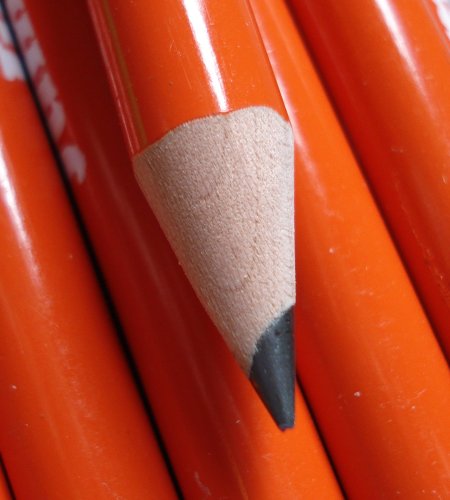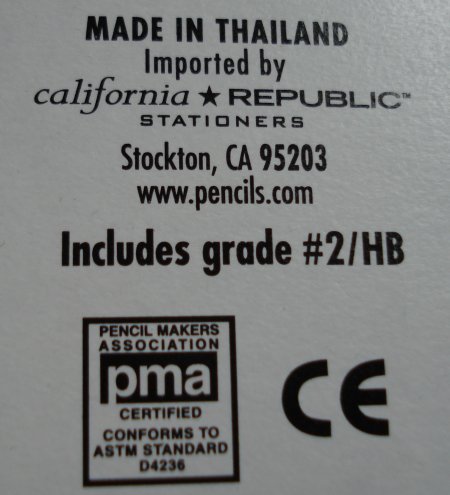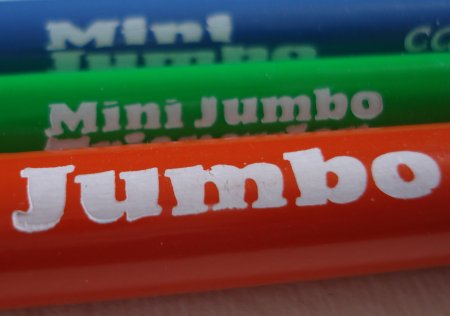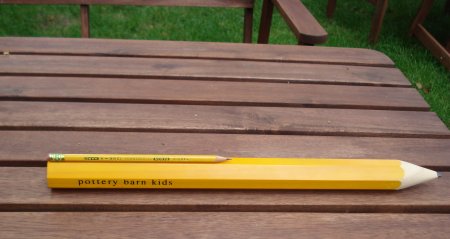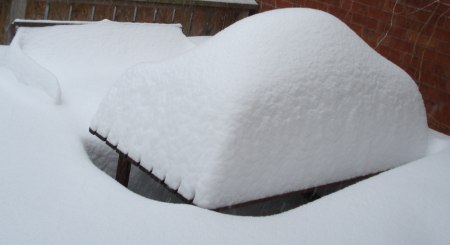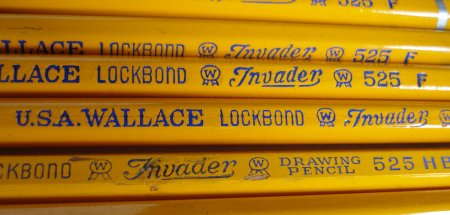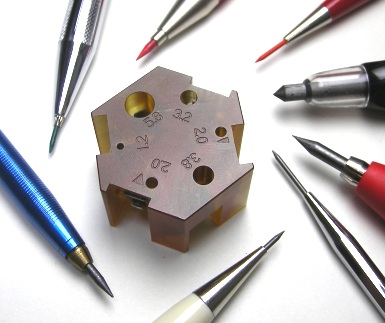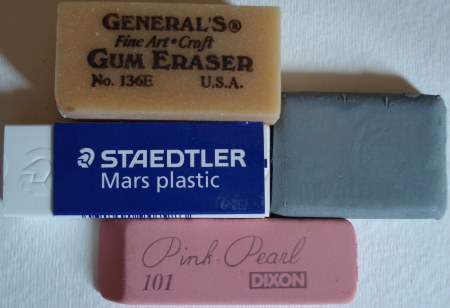
Let’s take a look at some popular pencil erasers.
When I’m taking notes at a meeting, I rarely use an eraser. There just isn’t time. I strike out the error, and carry on. But at my desk or at home, the ability to correct one’s writing, charts, and drawings is a major benefit of the pencil. It’s especially great when the eraser works well.
I wanted to look at the two leading erasers that I see in the marketplace – the “Pink Pearl”, and the “white vinyl” type, specifically the Staedtler Mars plastic. I’ve also added in a gum eraser, and a kneadable eraser. There are still other types of erasers, but I think these four represent the main categories one would encounter in an office or art supply shop. I specifically wanted to test the Pink Pearl and Mars plastic side by side since they are so well known.
The science behind gum, rubber and erasing is interesting, but out of our scope today. There are some links below for further reading.
For the test, I sought brand new erasers at local stores. The Mars plastic came fully wrapped. The Pink Pearl was in a “blister pack” of three, the Lyra kneadable eraser was partially wrapped, and the General’s gum eraser was loose. The exact models used were:
General’s Gum Eraser No. 136E
Dixon Pink Pearl 101
Staedtler Mars plastic 526 50 UP
Lyra Knetgummi 3467
My reference pencil, the Staedler Mars Lumograph 100, was used for the first round of tests. A second test suite was done with Pentel Hi-Polymer Super 0.9mm HB lead, used in a mechanical pencil. This was partly to contrast the pencil lead types, as well as give the erasers additional tests.
Four paper types were chosen to represent a spectrum of types and quality. Two cheaper papers (Office copy, Moleskine), and two better quality papers, including watercolor paper – Rhodia, and Strathmore cold press watercolor. The exact papers were:
Xerox Business 4200 20lb. 75g/m2, 92 brightness
Moleskine
Rhodia vellum paper 21.3lb 80g/m2
Strathmore Watercolor cold press 140lb 300g/m2
Two type of markings were made – a straight line, and a doodle/shading of a square area.
I took photos as well as having the original documents for comparison. I realized that this also turned out to be a test of the papers and leads from the erasure perspective.
Here is a test sample, the Mars Lumograph 100 on Rhodia, before and after erasure.
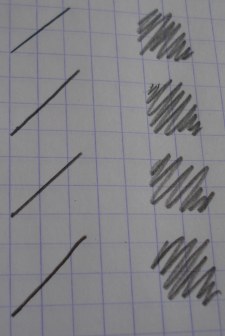
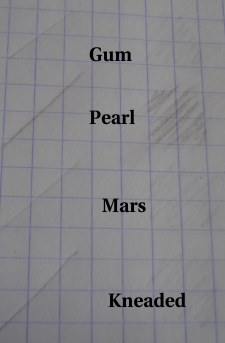
Here are the scores. The erasure results were ranked 1 to 4, with 1 being the best erasure, and 4 the worst erasure.
Chart 1: Lumograph 100 line erasure
|
Xerox |
Moleskine |
Rhodia |
Strathmore |
| Gum |
2 |
1 |
2 |
2 |
| Pink Pearl |
4 |
4 |
4 |
4 |
| Mars plastic |
1 |
2 |
1 |
1 |
| Kneaded |
3 |
3 |
3 |
3 |
Chart 2: Lumograph 100 drawing erasure
|
Xerox |
Moleskine |
Rhodia |
Strathmore |
| Gum |
2 |
1 |
3 |
1 |
| Pink Pearl |
4 |
4 |
4 |
4 |
| Mars plastic |
3 |
2 |
1 |
2 |
| Kneaded |
1 |
3 |
2 |
3 |
Chart 3: Pentel Hi-Polymer Super line erasure
|
Xerox |
Moleskine |
Rhodia |
Strathmore |
| Gum |
2 |
3 |
2 |
2 |
| Pink Pearl |
4 |
4 |
4 |
4 |
| Mars plastic |
1 |
1 |
1 |
1 |
| Kneaded |
3 |
2 |
3 |
3 |
Chart 4: Pentel Hi-Polymer Super drawing erasure
|
Xerox |
Moleskine |
Rhodia |
Strathmore |
| Gum |
1 |
3 |
3 |
1 |
| Pink Pearl |
4 |
4 |
4 |
4 |
| Mars plastic |
2 |
1 |
1 |
2 |
| Kneaded |
3 |
2 |
2 |
3 |
Interpreting these results, the Mars plastic is the best or almost the best at erasing lines on all types of paper. Erasing a Lumograph 100 drawing, the General’s Gum eraser performed slightly better. At Pentel drawings, the kneaded eraser did very well, though not better than the Mars.
The overall test winner is the Staedtler Mars plastic, with a nod to the General’s Gum for woodcase pencil artists, and kneaded erasers for mechanical pencil artists. As the results depended on the task and type of lead and paper, the real lesson is that an eraser has to be looked at as part of a pencil/paper/eraser combination, and in the context of usage.
The Pink Pearl was a disappointment. It came last in all sixteen invividual tests, and sometimes left a pinkish smear.
The kneaded eraser has a major benefit that became apparent as my desk got filled with eraser detritus: Kneaded erasers leave no residue, since they absorb the graphite as they erase. The eraser thus gradually becomes darker (and dirtier) over time.
An observation about the pencil lead is that the mechanical pencil lead is much more erasable – remarkably so in some cases. The Pentel markings on the Moleskine and Rhodia seemed to just disappear with the Mars eraser. The mark’s only remaining evidence seemed to be indentations in the paper from the pencil’s pressure – and these require careful examination to see.
The photocopy paper and the artist’s watercolour paper – neither of which were created for pencil use – retained the most graphite after erasure attempts.
Further reading:
Erasers World A collection and information site for erasers. Several interesting company biographies, as well as essays on erasers and eraser materials.
Joy of Erasers Blog devoted to erasers.
Wikipedia eraser article Not bad for Wikipedia.
Chemical & Engineering News Informative non-technical article on erasers.
Staedtler document on erasers (700K PDF) A mix of technical and marketing information about erasers.
